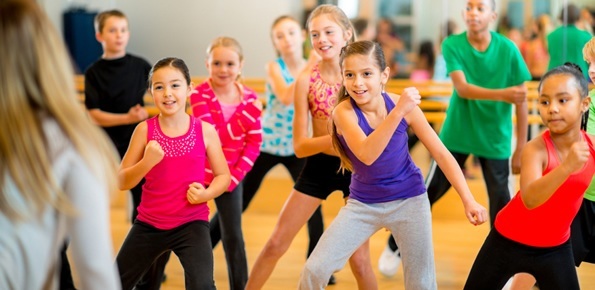As a dance teacher, I want training at A Step Above Dance Academy to be a springboard for the rest of our student’s lives. If they pursue dance as a serious extracurricular or a career, fantastic, but dance goes well beyond prepping for a knockout performance on the stage.
Dance matters.
The impact that dance has on the lives of children, tweens, teens, adults, and seniors is epic. From individual therapy and the benefits of physical movement to a noncompetitive alternative to sports, dance stimulates every bit of the body and mind. Not to mention the soul…
Here are 5 reasons why dance should be taught in schools:
#1 – Dance gets the heart pumpin’
First and foremost: exercise. Dance can be a great form of physical activity for people of all ages. As a teen, there is no way you would’ve gotten me into a gym to run on a treadmill or lift weights. I stayed in shape because of dance, plain and simple. Schools can incorporate an appropriate, exercised-based dance course to get students moving. A natural appreciation of a healthy lifestyle is formed and will inevitably help students see the connection between feeling good and movement. Plus, students will realize the restriction of the body when movement is nonexistent.
#2 – An appreciation for the arts
Incorporating dance as part of school curriculum will help nurture a sense of appreciation and admiration for the arts. Dance is a fine art, an idea lost for many people because it has become such a competitive “sport” in many arenas. In reality, dance is, and always will be, an art and deserves the same kind of respect, admiration, and appreciation as, say, a symphony orchestra or the opera.
#3 – A boost in social & self-acceptance
There is nothing more embarrassing than going to your senior prom not knowing how to dance. Teaching dance in schools at a young age can help boost confidence and eliminate the fear of “performing” all together. A dance curriculum in schools may not prepare a student to audition for a classical ballet company, but it can take away some of the insecurities felt when put into social situations where dance is expected. And let’s think beyond parties and events. Children speak and move to express themselves. When we dance, we experience a heightened sense of creativity that pushes us to extend beyond our limitations and develop coping skills that can last a lifetime.
#4 – A change at originality and expression
Dance gives students a creative outlet for ideas and feelings, especially when words are difficult to come by. A safe place to express themselves, all dancers move differently and this originality in movement allows students to accept and understand one another. This acceptance and respect for one another can spread further. Introducing cultures by way of movement leads to appreciation. Dance varies in music and tone, and most importantly, can lead to a new way of communicating with one another.
#5 – Poise in the spotlight
There are many times in a child’s life when she will be in front of her classroom peers presenting information. Dance allows students a new way to gain confidence and feel comfortable speaking, moving, or leading an audience. A very personal way of communicating, if a child can feel comfortable enough sharing their movement with an audience, imagine the confidence they will eventually feel giving a speech in front of their peers.
For more information on the benefits of dance, check out these good reads!
The Positive Psychology of Dance, Psychology Today
To Dance is a Radical Act, Psychology Today
Live. Love. Dance.
Image via Planet Play



Recent Comments